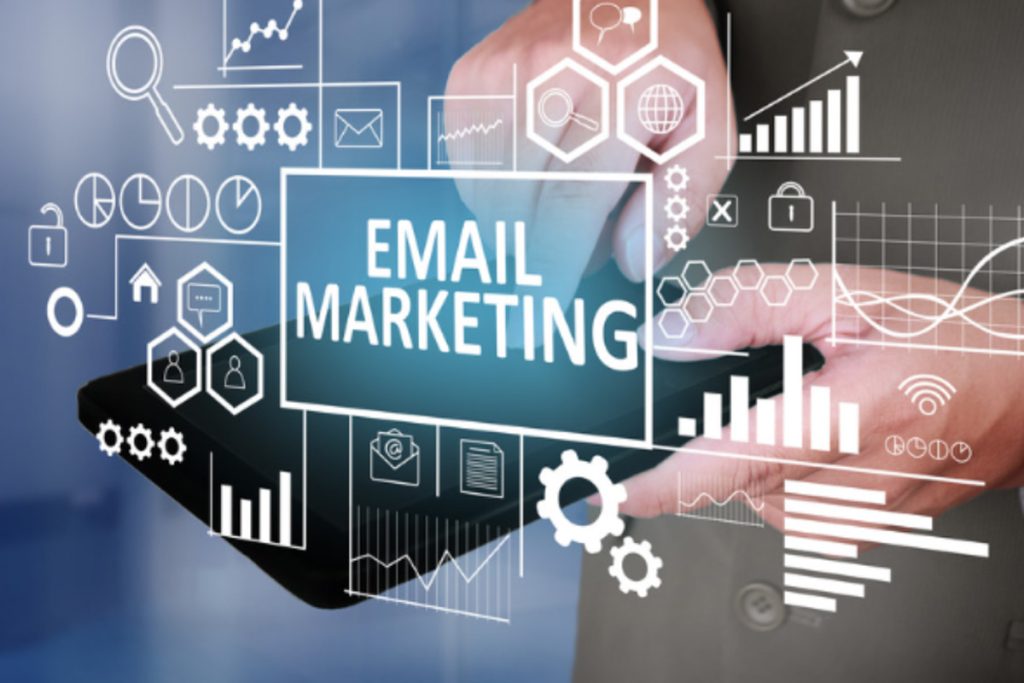The Importance of Email Lists for Businesses

Mailing lists may seem “old-school” to many business owners because email has been around for so long. Email marketing has indeed evolved significantly over the years and has shown remarkable resilience despite the ever-changing landscape of digital communication.Let’s take a journey through its basic evolution:
1990s-2000s Early Days and Rise to Prominence
In the 1990s, businesses started using email as a direct marketing tool to reach their audiences. As the internet became more accessible and email became a staple of communication, email marketing grew in popularity.
2000s-2010s Personalization and Segmentation
With advancements in technology and data analytics, email marketing began to focus on personalization and segmentation. Marketers realized that sending the same generic message to everyone wasn’t effective. They started segmenting their email lists based on factors like demographics, past behaviors, and interests. This led to more relevant and targeted email campaigns, which resulted in higher engagement rates.
2010s Responsive Design and Mobile Optimization
As smartphones became widespread, the importance of mobile optimization in email marketing became evident. Marketers had to adapt their email designs to ensure that messages looked and functioned well on various screen sizes. This marked the rise of responsive email design.
2010s Automation and Triggered Campaigns
The automation of email campaigns became a game-changer. Marketers could set up triggered emails based on user actions, such as abandoned carts or sign-ups. This automation allowed for timely and relevant interactions with subscribers, enhancing the overall customer experience.
2010s Integration with Data and Analytics
The integration of email marketing with data analytics platforms allowed marketers to track various metrics, such as open rates, click-through rates, and conversion rates. This data-driven approach enabled marketers to refine their strategies, optimize their campaigns, and achieve better results over time.
2010s-Present Content Quality and Value
As the online landscape became more crowded, email marketing shifted towards delivering valuable content to subscribers rather than just promotions. Brands started focusing on providing educational content, entertainment, and solving their audience’s pain points. This approach helped build stronger relationships with subscribers.
2010s-Present Resilience in the Face of Social Media
Despite the rise and fall of various social media platforms, email marketing remained resilient. Social media platforms come and go, and their algorithms can affect how brands reach their audiences. In contrast, email marketing provides a direct channel of communication between brands and subscribers, allowing for more control over the message delivery and audience engagement.
Present and Beyond Advanced Personalization and AI
Presently, email marketing continues to evolve with the integration of artificial intelligence (AI) and machine learning. These technologies enable advanced personalization, predictive analytics, and even more effective automated campaigns. Marketers are able to understand individual preferences and behaviors to deliver highly targeted content.
With it’s adaptability and resilience, should it be no surprise that email marketing, on average, still performs significantly better than most (if not all) forms of marketing – digital or otherwise and delivers a much higher ROI.
According to a survey by OptinMonster, businesses experienced an astonishing average ROI of 3600% through email marketing. The key to achieving the 36:1 average ROI of email marketing is building a strong mailing list. Even brilliant email campaigns will fall short if you don’t have a quality, targeted, and large mailing list. In 2021, building and managing your list organically should be a top priority.
How Do Mailing Lists Work? What Are They?
Put simply, a mailing list is a list of email contacts that are used for communications, information sharing, and marketing outreach.
Mailing lists allow businesses to connect with and engage leads, prospects, existing and past customers. You can send email messages to subscribers of your mailing list about relevant content, news, events, products, and services.
Depending on your organizational goals, processes, and email platform, you can use your mailing lists to send one-off emails, sales emails, and triggered emails based on engagements.
Or you can send a series of automated email campaigns customized for each recipient or segment of your mailing list based on their marketing persona.
Automated email campaigns are also called drip campaigns, lifecycle emails, and marketing automation.
Today, there are even AI-driven auto-personalization email platforms that automatically send tailored content based on each subscriber’s previous email interactions to maximize engagement and value.
List Building
You can build up a strong mailing list organically by creating email-protected lead magnets on your site full of useful and engaging content and unique value propositions. You should also strategically place relevant sign-up forms on your website with strong calls-to-action.
Then, continuously segment your mailing list into groups. Email segmentation allows you to send tailored content based on the recipient’s unique marketing persona to increase email engagement and conversions.
You can segment your lists by tagging contacts based on their user information and behavioral/email engagements and segmenting them into groups of “similar members.”
Email automation platforms make it easy to segment your mailing lists. Alternatively, you can use newer auto-personalization platforms to easily and quickly individualize newsletters and email campaigns for each recipient.
List Management
Your mailing lists should be made up of people who physically subscribe to your email list. If they ever unsubscribe, their email address should be removed immediately.
Laws such as CAN-SPAM Act prohibits unsolicited bulk email. The standard for email permission today is called double opt-in (aka confirmed opt-in). This is when a user signs up or subscribes to your mailing list, and then you send them an automated email with a confirmation link.
It’s also important to keep your mailing lists clean and free from users who have unsubscribed, fake email addresses, unresponsive contacts, as well as soft and hard bounces. If not, you could end up on an email blacklist, which identifies your email domain and/or IP address as spam.
Do mailing lists work? How effective are they?
Mailing lists are highly effective if they are 1) authentic, 2) relevant, and 3) large in quantity. Email lists consisting of active email addresses and real contact information for a high volume of people within your target audience base delivers a 4400% ROI.
With its insane ROI, there's no doubt that mailing lists are still widely important and one of the most powerful "modern" forms of communication.
To yield the lucrative rewards that mailing lists can generate for your business, you need reliable email addresses from active email users who are genuinely interested in your brand and offerings.
If you don’t have quality and relevant email contacts, then the volume of your mailing list won’t make a huge difference. So, ensure quality and relevancy are in place first before you switch your focus to the quantity of your list.
Why are mailing lists important for businesses in 2023?
Building, segmenting, and keeping your mailing list clean should be high on your list of organizational priorities for the foreseeable future.
Here’s why:
- You get a direct line to your subscribers' inbox. That's simply not the case with social media platforms and other marketing channels.
- Targeted Marketing and Segmentation: The Power of Email Lists. In today's competitive business landscape, small businesses must seize every opportunity to stand out and connect with their target audience.
- Increased Reach and Engagement: Unleashing the Potential of Email Lists. With over 4 billion people actively using email, there's never been a more opportune time for small businesses to harness the potential of their email lists.
- Developing Trust with Customers: The Role of Email Lists. Trust is a vital currency in the business world, and email marketing plays a significant role in building and fostering trust with customers.
- High Conversion Rates and ROI: Unlocking the Power of Measurable Results. The success of email marketing is evident in its ability to generate tangible and measurable results.
What kind of businesses benefit the most from mailing lists?
In the past, big advertisers and data collection companies used email to place pixel files on recipients’ devices to track their online activity. But the release of iOS 15 has been a game changer in the world of email marketing, and for the better.
The new Apple Mail gives users more control over their personal data. In doing so, it limits insight into who, when, and how many times someone opens an email. And Apple Mail holds 93.5% of the email market share on mobile and 58.4% on desktop!
Senders can no longer track email opens or use open-tracking pixels, but you can still track click rates and unsubscribe rates. These two metrics provide a lot more intelligence into interest levels, campaign effectiveness, and whether you’re giving your audience more value than you’re taking.
This change is a triumph for businesses who send useful, engaging, and action-oriented emails over ad-based junk mailers and spy trackers that sell ads based on personal information.
Should I Buy A Mailing List?
Many business leaders today are tempted to simply purchase mailing lists. But as they say, history is the best teacher and when you look at time-tested truths, you’ll see that buying a mailing list rarely gives you what you pay for.
In fact, trusting an online source that promises thousands of mailing contacts is a bad idea nearly 100% of the time. And here’s why:
- Purchased lists are often poor quality. Many "subscribers" have fake or old email addresses.
- The few real email contacts probably aren't your target audience and likely won't be interested in your products and services, especially if they've never even been to your website.
- Odds are you'll get flagged as spam if the contacts don't subscribe to your mailing list.
- Purchasing email lists is often forbidden by email service providers.
- Your competitors may be using the same list.
- It'll destroy your email KPIs and metrics (e.g. delivery rate, open rate, click-through rate, click-to-open rate, unsubscribe rate, hard and soft bounce rate, spam complaints).
- Your reputation will likely take a hit.
- It'll destroy your email KPIs and metrics (e.g. delivery rate, open rate, click-through rate, click-to-open rate, unsubscribe rate, hard and soft bounce rate, spam complaints).
The Future Of Email Marketing For Businesses
The new era of mailing is all about maximizing click engagement and minimizing unsubscribes. A powerful way to accomplish this is through personalization.
Personalized emails deliver six times higher transaction rates than one-size-fits-all email messages. In fact, personalization is the most effective email tactic today.
The future of email marketing is all about sending personalized, targeted, and automated emails that deliver valuable and relevant content.
Getting a plan in place today and building your mailing list will allow you to take advantage of the dramatic returns of organic list building and email outreach.
Summary: Why You Need To Build A Mailing List Right Now
Email is a goldmine for businesses, if you use list building best practices. The effectiveness and ROI of list building depends on the authenticity and relevance of your lists, first and foremost, and, secondly, the length of your list.
Beyond organic list building practices, the quality and level of personalization of your campaigns is essential for your email marketing efforts to work going forward.
If you’re not already doing so, the time is now to build up your mailing list and promote trust and value in your brand with engaging and targeted email communications.
Ready to get started? Check out our E-Mail Marketing Checklist For Small Businesses.
About the Author

Kevin Bossons
General Manager
With over 15 years of experience in digital marketing and search engine optimization, Kevin has grown from an SEO contractor to General Manager at WT Digital Agency.